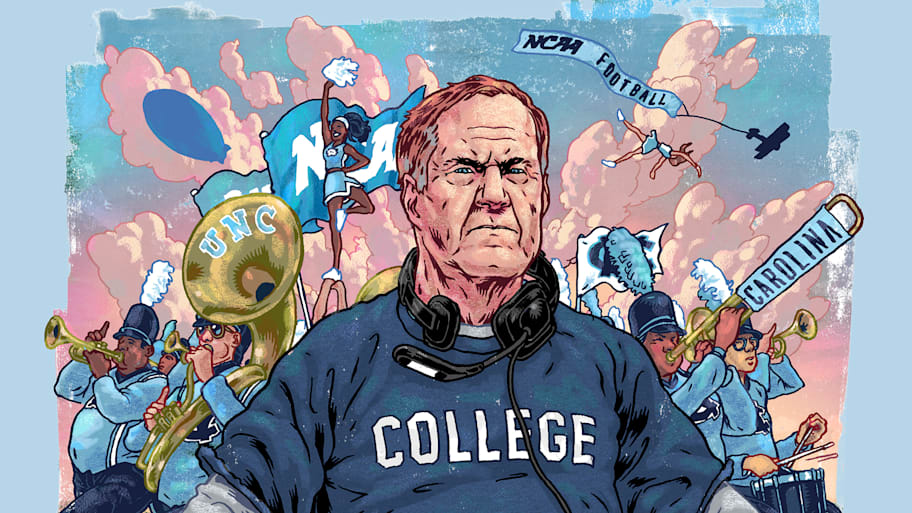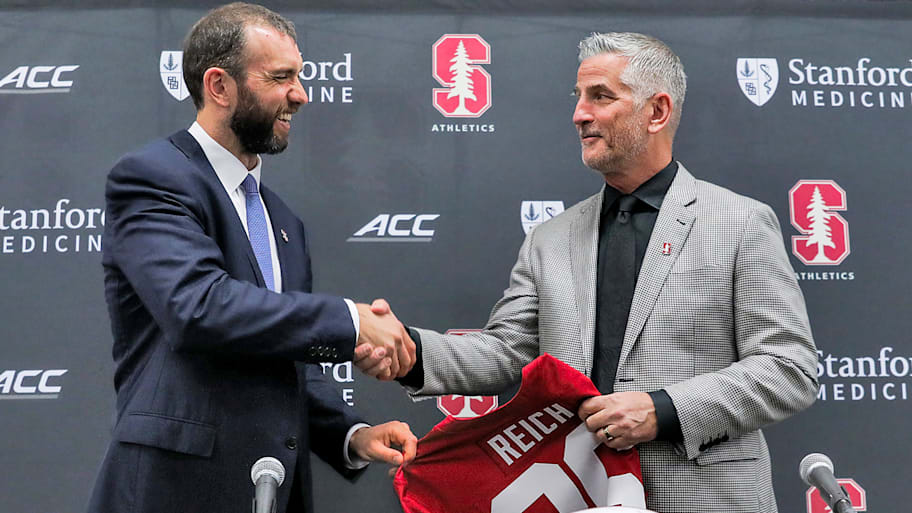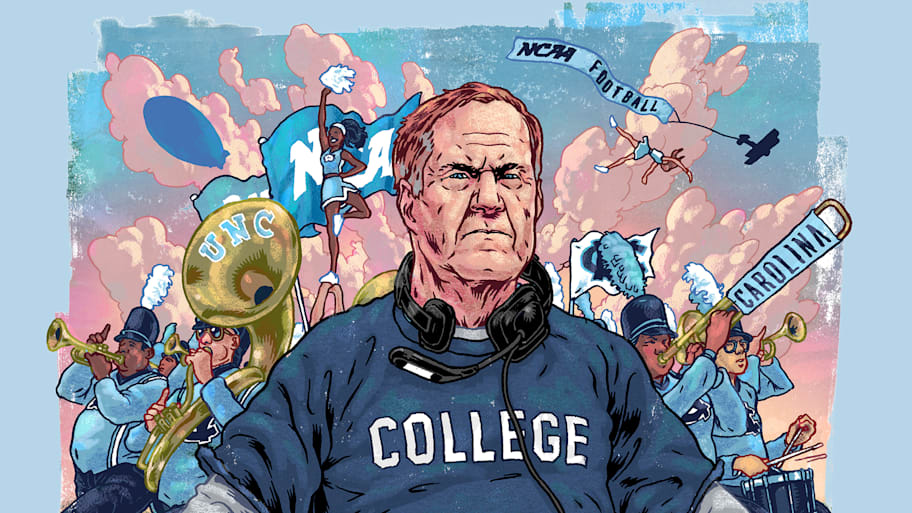The genesis of James Blanchard’s career can be traced back two decades to far east Texas, with some high school highlights, a handful of online message boards and, later, hundreds of posts on a then nascent social media platform called Twitter.
As college coaches began visiting his West Orange–Stark High to recruit players in the classes of 2006 and ’07, Blanchard could scarcely believe there wasn’t more buzz surrounding two of his teammates, both of whom were prominent defensive backs: Deon Beasley and Earl Thomas.
Blanchard began posting his thoughts to anybody who would read them—and then would often post some more. Eventually, the outside attention began to align with his views. Beasley went to Texas and then played in the CFL. Thomas followed the same path to Austin a year later, helping lead the Longhorns to a national title game appearance before becoming a first-round NFL draft pick of the Seahawks.
After years spent on message boards, Blanchard’s eye for talent—not to mention his expansive connections across the state—caught the attention of Baylor coach Matt Rhule, who lured Blanchard away from his lucrative job at a fire hydrant plant to become the school’s director of recruiting in 2019.
“Really it’s the equivalent of hitting the life lottery: bothering coaches on Twitter and posting about kids on message boards, to where college coaches started paying attention, for whatever reason, and listening to me,” says the 35-year-old Blanchard.

Blanchard is now Texas Tech’s general manager, a title that reflects the increasing professionalization and evolution of college football from those early days where an offer to an athlete was limited to just a scholarship. The job, once niche, is now mainstream as players have the ability to transfer with immediate eligibility and take advantage of more liberal name, image and likeness rules. This season, for the first time, players will be paid above the table by schools in the form of revenue sharing, up to a cap figure of $20.5 million. And it’s becoming common for players to have contracts with their universities that include some form of buyout.
As roster building becomes more complex, two-thirds of FBS teams have a person on staff carrying a general manager title in 2025, while several others have someone who holds an equivalent position with a different title.
How these newfangled, NFL-like front offices are set up is scattershot, depending on the locale and, often, the amount of power that the head coach yields. Organization and duties vary widely, and pay can go from five figures to rivaling that of major coordinators. (Bill Belichick consigliere Michael Lombardi is earning $1.5 million as the North Carolina general manager.) Their football résumés are equally diverse.
Vanderbilt GM Barton Simmons was a recruiting analyst with 247 Sports. Iowa hired former NFL GM Scott Pioli as a consultant last year, while Big Ten rival Nebraska just plucked former Patriots director of pro personnel Pat Stewart to be its new general manager. Vince Marrow jumped from being an on-field coach at Kentucky into the GM chair with rival Louisville. Former Senior Bowl executive director Jim Nagy has built out a personnel department as Oklahoma’s new general manager.
“Our whole plan was we were going to have a personnel department and we were going to run this more like an NFL team with scouts and a GM that were really evaluating and trying to help the position coach and the coordinators decide who we’re going to offer,” says Texas Tech coach Joey McGuire. “[Blanchard] had total control from the standpoint that he did not have to wait for anyone to offer. I was the only person in the building who could tell him no.”
“Our whole plan was we were going to have a personnel department and we were going to run this more like an NFL team with scouts and a GM that were really evaluating and trying to help the position coach and the coordinators decide who we’re going to offer.”Texas Tech coach Joey McGuire
Blanchard is often on the phone with player agents as soon as he walks into Tech’s sprawling football facility in the morning and has regular meetings with staffers handling the team’s new salary cap before even getting to the point where he’ll watch film on both high school prospects and players in the transfer portal.
The thought of such a setup would have been anathema to most observers a decade ago, when recruiting was the bailiwick of the head coach and his nine assistants, who would watch film on high school players, contact them consistently and sell a bevy of promises in the hopes that the kid would put on the correct hat and finally fire up a fax machine to make an arduous years-long process official. Now, things have become much more transactional when it comes to filling out the roster—and, crucially, maintaining it from season to season.
“It’s no longer the days where you can sign the best players at every position. You’re never gonna get two of the top players at the same position, in the same year, just because the price tags on them are too significant,” says Ohio State GM Mark Pantoni. “There’s a lot of strategy in finding value picks in building your roster well.”
Pantoni got his start at Florida under Urban Meyer 20 years ago. After jumping off the pre-med track to stuff envelopes and pick up recruits from the airport, Pantoni has seen a near constant evolution in what it takes to bring talent in the door. He was the architect of the most recent national championship roster in Columbus with a price tag of $20 million.
“Back then, I was involved in the recruiting aspect, building great relationships with the kids and their families,” he says. “Now, over the last couple years, I really have no relationship with them because of the business side of things. Instead of interacting with the kids and families, now it’s building relationships with their agents.”
Or, as Blanchard puts it: “It’s all about money now. It’s crazy.”
Maybe the grandest experimentation in the field lies, unsurprisingly, in a place with plenty of money and little direction on how to use it—the Bay Area.
Stanford lured former standout quarterback Andrew Luck to be the program’s general manager and handed him total oversight of the football program, while placing him outside the traditional structure reporting to the athletic director. That unique setup allowed Luck to fire head coach Troy Taylor in March, just weeks after reports, which he denied, surfaced of NCAA violations and of an inappropriate workplace environment for female staffers. Luck subsequently hired former NFL coach Frank Reich to run the program in an interim capacity and is set to make his first full-time hire after this season wraps up.

Over in Berkeley, Cal made former NFL coach Ron Rivera the team’s general manager in January (reporting directly to the chancellor). Rivera was initially brought on to simply help fundraise and provide direction for a program which has struggled to get over the hump on the field, but his duties were expanded in the wake of athletic director Jim Knowlton’s retirement to include complete oversight of the football program.
After 40 years in the NFL, Rivera has enthusiastically dived into the weeds alongside Golden Bears head coach Justin Wilcox to tackle everything from the portal to finding resources for more front office personnel. “It’s very similar [to the NFL],” Rivera says. “The only difference is that there are very few parameters, very few rules, very few people holding people accountable. The whole portal thing has been very interesting. Honestly, I think it’s bulls--- because there are rules and people don’t necessarily follow the rules. There are parameters, but people don’t follow the parameters.
“Certain schools are going to just do it their way and basically try to buy a championship. It’s not the spirit of the rules and revenue sharing.”
Blanchard estimates that 10 to 15 college teams will field rosters this season that cost between $25 million and $35 million. “It’s going to be just like in the NFL. If the head coach is winning, the head coach is the most powerful man on campus,” he says. “If a head coach isn’t winning and the GM is hired, the GM is going to be the most powerful man on campus behind the athletic director. The healthiest spot is if they have a GM and a head coach that are collaborative. The head coach is uber successful winning games and his GM is the wingman handling everything off the field. It’s all-encompassing now. You’re really running an NFL front office.”
That’s part of the reason there’s much more cross-pollination between NFL and college football circles in recent years, especially off the field, where a coach like the 73-year-old Belichick no longer has to find something in common with a 17-year-old recruit.
But the challenges facing an NFL GM aren’t quite the same as those that college GMs see. “The NFL model is much more efficient where, at the end of the season, you’re doing retention first, then you’re supplementing with any free agency you may have,” says Pantoni. “Then the draft is the very last piece, where you’re adding in your rookies. College is the opposite. The revenue sharing runs July 1 to June 30, but the playing season is over in December or January, so the timing doesn’t make sense for us trying to negotiate deals.
“We’re operating backwards from the NFL. You’re doing the high school world first—the rookies, then the transfer portal, free agency, and then on the back end you have retention. If we can get that model more aligned, it would make our jobs a lot easier.”
Efforts are being made to do that but until then, general managers across both levels of the game will have to commiserate by fighting the same uphill battle in picking players, paying them and then winning enough to garner some level of job security.
If they don’t, getting off social media—instead of posting on it—might best be advised.
This article was originally published on www.si.com as Why College Football Is Emulating the NFL.
